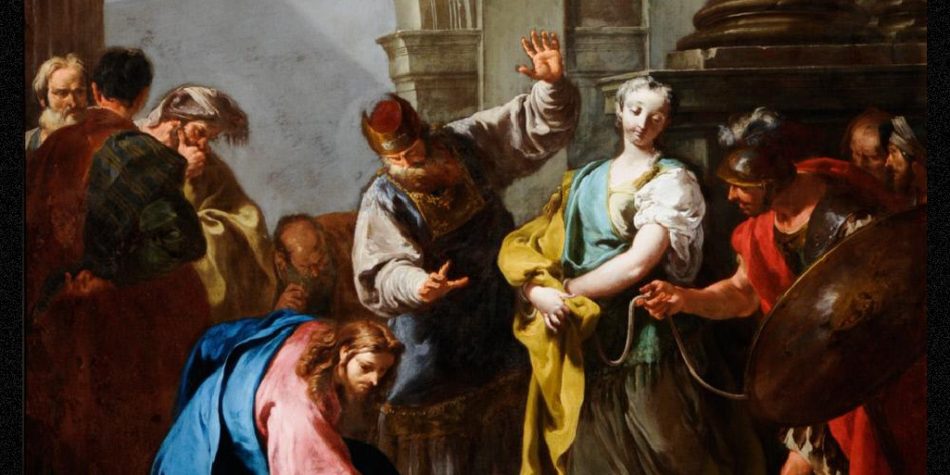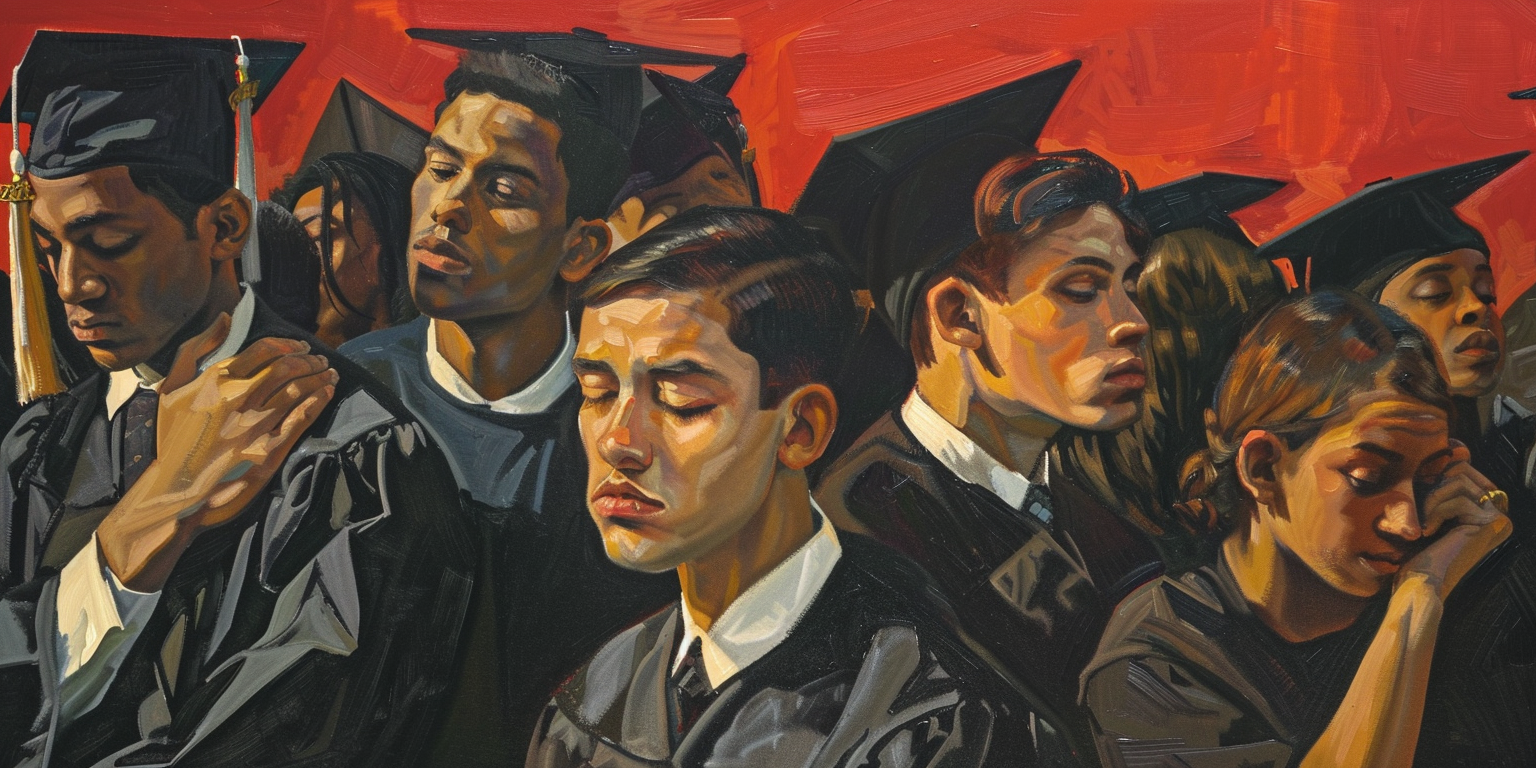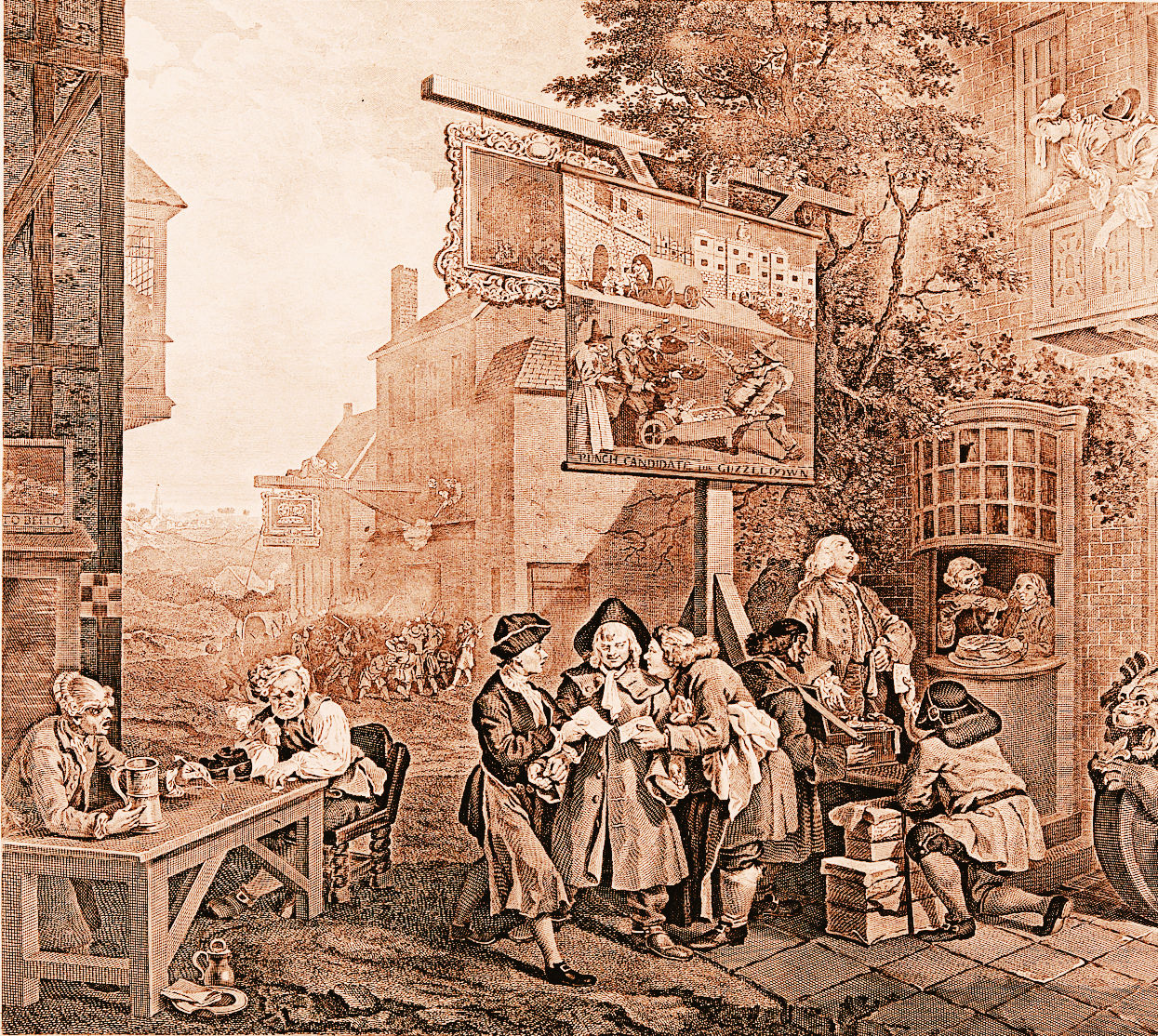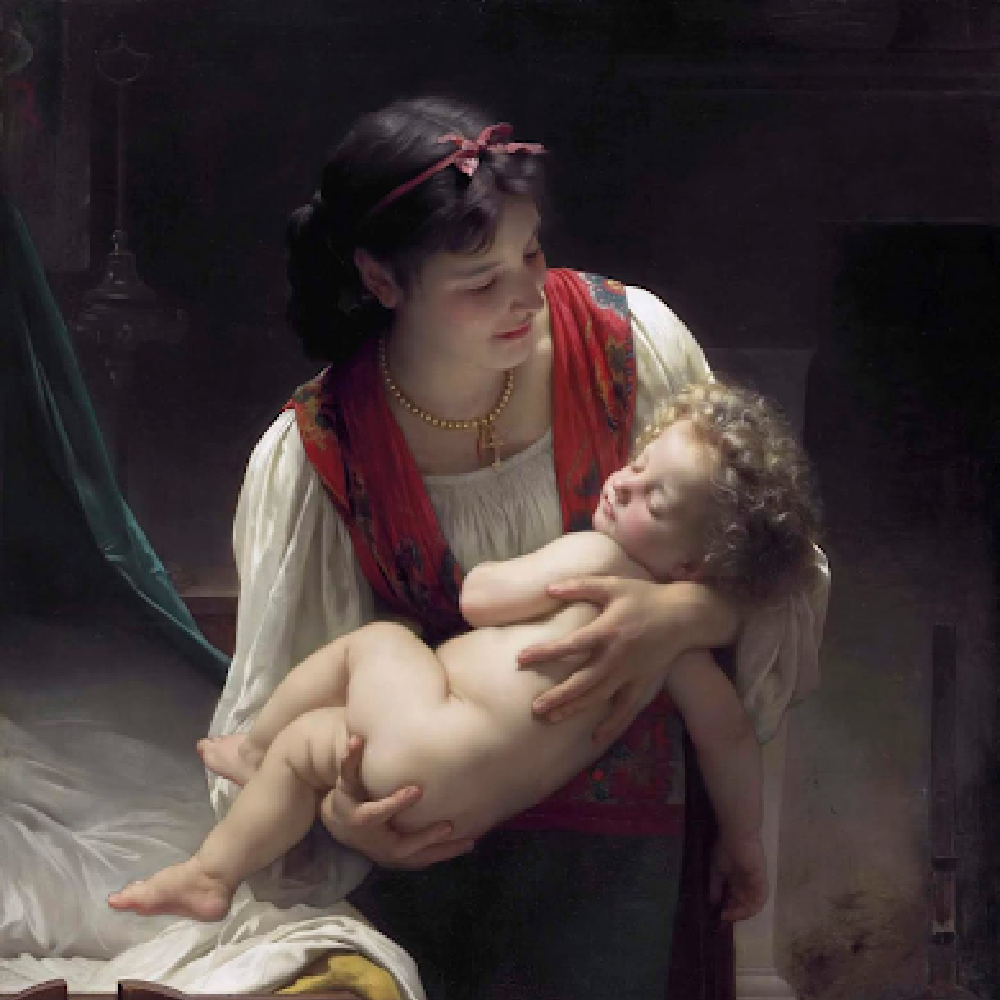In the Lord Jesus Christ’s great intercessory prayer in the Garden of Gethsemane, He pleaded with His Father in Heaven that we would be “one.” That unity is not just a nice aspiration, it is a commandment of God. But amidst current raging contentions in our land, how is that unity (and the peace that goes along with it) to be found?
As foreign as it may sound to secular ears and as familiar as it may sound to Christian ones, the truth is still that Christ’s own mortal ministry and atoning sacrifice provide ancient patterns with abundant relevance today in creating unity and reconciliation as a people and a nation.
Jesus, Himself, lived on earth during a period of intense political, social, and cultural division among the Romans and Jews. Both the Romans and the Jews experienced continual infighting and threats of violence from within. These two groups co-existed in a fragile balancing act between secular and religious truths, along with variant forms of worship and belief systems. On many levels, the Romans’ colonization and rule of Palestine threatened the Jewish way of life and their identity as God’s chosen people. Conflict was rife, as was the average Jewish person’s desire for justice and a return to self-rule rather than domination by a foreign power. Would the Israelites ever truly be free again?
Jesus was born into this conflict-ridden culture as one of the least empowered players in the Roman-Jewish hierarchy. For 30 long years, He remained subject to His earthly parents away from public scrutiny, preparing for the day when He would be called to confront the falsehoods and injustices weighing upon the people of His day. But how exactly would He go about revolutionizing society to correct wrongs and empower people to live in peace?
During His short three-year ministry, His words and deeds evidenced His overriding care, concern, and desire to first reconcile those around Him with their Father in Heaven by bringing people into patterns of righteousness. As part of that, Jesus of Nazareth taught revolutionary ways of treating individuals and groups that directly confronted the sources of conflict in His society and in the hearts of individual people.
The Sons of Mosiah, filled with the spirit of their recent conversion to Christ, went to the Lamanites in hopes they “might cure them of their hatred.” Remarkably enough, as the Book of Mormon record shows, that’s exactly what the gospel message they shared accomplished in many thousands of their own converts. But how could a seemingly abstract, religious message have such power?
According to conflict theorists, the primary driver of conflict is incompatible goals. Our incompatible goals are fed by three main sources: (1) perceived or real scarcity, (2) incompatible values, and (3) incompatible roles. In short, when we believe there are limited resources that we all fight for, we are just too different to get along, or we are playing for opposing teams, we are more likely to experience conflict with each other.
These three sources of incompatible goals show up in various ways in our lives, demonstrated by hostile oppositions all around us: environmentalist versus developer, rural versus urban dweller, conservative versus liberal, black versus white, religious versus atheist, and so on. The list of perceived incompatible goals we could create between us is as endless as our imaginations, which is what makes serious reflection on what we truly want to envision for ourselves and those around us so invaluable. Too often, we are willing to allow our perceptions of (fundamental, intractable) difference to guide our actions rather than the larger desires for unity so many of us naturally carry as well. Eventually, perhaps it should not surprise us when we find what we are looking for: enemies threatening us all around. Could it be that we wind up so embattled, in part, because we expect too little of ourselves and fail to imagine what else might be possible?
Is my vision so limited, that I can only see you as my enemy? Is our Venn diagram intersection so narrow that there is no overlap between us? As the Psalmist of the Old Testament laments, “Where there is no vision, the people perish.” What if my vision sees only difference? Then, of course, we are doomed to perpetual conflict and all the heartache that goes along with that. Jesus Christ understood the natural flow of conflict within individuals and across society and sought to stem the tide.
But our faith shows so much more to be possible. It requires moving beyond a vision of darkness, despair, and the belief that we are just too different to ever love or understand each other. We must learn to see beyond our current categories to create and recreate what we long for in human connection, peace, unity, and reconciliation not only with God, but with each other … yes, even the ones that drive us crazy, or that we see dismissively. As Jesus reminded, “For inasmuch as ye have done it unto one of the least of these my brethren [and sisters], ye have done it unto me.”
This is hard stuff—both within individual hearts, and between us. Yet, Jesus Christ understood the natural flow of conflict within individuals and across society and sought to stem the tide, not only through His grace but through His living example of how to treat each other. Rather than only a poetic flourish, when He said, “I am the way, the truth, and the life,” He means it! Jesus is our way out of the conflict that divides us.
In plainness and directness, the Lord urges us to come follow Him to live according to the patterns that create unity and peace, rather than continuing to be swept away in the world’s offering of division and difference. Yes, this is difficult. But with access to His grace, we are enabled to live according to heavenly patterns—for “with God, nothing shall be impossible”—if we desire it.
And remember those core drivers of conflict identified by the experts? Careful consideration of Christ’s earthly ministry and sacrifice help us understand how He reversed the clearest drivers of conflict through (1) living in abundance, (2) creating common ground, and (3) building unity as members of the same team. In this way, the “culture of Christ” involves cultivating precisely the conditions that pull up conflict by its root.
Relishing abundance. Jesus directly addressed the first conflict driver of perceived or real scarcity by teaching principles of abundance, saying “I am come that they might have life, and that they might have it more abundantly.” During His ministry and through His endless atonement, Jesus offers abundant mercy, connection, healing, sustenance, acceptance, hope, bounties of truth, and ultimately, access to His grace even to the most forgotten and despised of the human family. Through miracles, personal encounters, forgiveness, teaching truth, and great demonstrations of mercy, Jesus also illustrates His Father’s continuous desire to give good gifts to His children.
From sipping water drawn by the Samaritan woman at Jacob’s well to visiting Peter after he had denied Him three times, the Savior’s bounty blesses all who will receive Him. He responds to the Gentile woman’s plea to heal her daughter, praises the Centurion’s faith above all others, calls Zacchaeus from the tree in Jericho, and calmly, but directly addresses those who criticize Him because He knows they need the bounties of truth that He teaches. He is moved with compassion and heals all the sick who are brought to Him. He assures disciples of the Father’s abundant ability to bless them like the fowls of the air and the lilies of the field. And He teaches His disciples through word and deed that if they will lose their lives in service, there will be so much more of them to find.
Through witnessing Christ’s numerous miracles, the disciples begin to understand that the Lord’s abundance doesn’t operate according to the world’s patterns; there is an endless supply of blessings, even many mansions in His Father’s house. Indeed, if this example is to be taken seriously, the way to abundance is not in hoarding blessings for ourselves, but through giving and loving others.
The truth is when we align ourselves with God’s will, He provides more than enough manna to sustain us, as He did with the children of Israel in the wilderness.
Appreciating common ground. Jesus addresses the second conflict driver of incompatible values by seeking to create common ground. This does not mean that He shies away from sharing truth with those who oppose Him. Instead, He offers His truth, His forgiveness, and His grace to anyone who will accept His gifts, even the woman taken in adultery, the leper, and the former persecutor, Paul. As Peter preached of Jesus, “God is no respecter of persons,” meaning that all are welcome to learn and live by His truth. He teaches us to love our enemies, bless those who curse us, and repent of our own faults before trying to correct anyone else. As the great physician, He is not reluctant to dine with the sinner, visit with the despised, accept an anointing of His feet by an outcast, and continue to heal despite the swirling criticism around Him. Jesus chooses to create unity, rather than division; He elevates rather than intentionally separating anyone from Him.
Instead of staying within His social circle, Jesus establishes truth and seeks to teach and share it with everyone, not just the willing listener. He carefully, but directly, cautions His skeptical listeners about potential pitfalls and temptations that divide and prevent them from finding peace and joy in this life and beyond. He warns us of our inability to successfully serve two masters and that “a house divided against itself shall not stand.” When taken by Caiaphas’s soldiers at night to an illegal tribunal, He does not hesitate to confirm who He is, as the Son of God, even healing the soldier’s ear injured by Peter’s sword. Later the next day on the cross, He is even willing to share truth with the two men crucified beside Him, as well as the Roman soldiers “who know not what they do.”
Insisting upon a common identity. Jesus addresses the third conflict driver of incompatible roles by emphasizing that we are all on the same team, as part of the human family with infinite individual worth. From His birth in a humble stable among animals, to one of His final acts of washing His disciples’ feet at the Last Supper, Jesus chooses to create unity, rather than division; He elevates rather than intentionally separating anyone from Him. During His agony in the Garden of Gethsemane, He prays that “they all may be one; as thou, Father, art in me, and I in thee; that they also may be one in us … that the love wherewith thou hast loved me may be in them, and I in them.”
Rather than use His power to aggrandize Himself, He overcomes the temptations of Satan in the wilderness, demonstrating that He is willing to do everything the Father has asked Him to. He shares His priesthood power and ordains apostles to act in His name. And He also forgives and strengthens His apostles, especially Thomas and Peter when they demonstrate weakness. After His resurrection, He even appears to his biological brother, James, despite his siblings’ disbelief in His divinity and ministry while He walked the earth. Most strikingly, He calls His disciples “friends,” saying that “henceforth I call you not servants; for the servant knoweth not what his lord doeth: but I have called you friends; for all things that I have heard of my Father I have made known unto you.” To those who are willing to follow Him, He is willing to share all that He has, even all that the Father has shared with Him.
In summary, Jesus does far more than preach a lovely message of ‘being nice’ to each other. His teachings reflect a profound ability and desire to reverse the core patterns of conflict that drive us to hatred and division. His final, culminating act of atonement, I would argue, also remarkably addresses all three of the primary drivers of conflict. Through His sacrifice and suffering, He demonstrates that His grace is abundant enough to save even the least of us if we will repent. He raises us to a common understanding and ability to come into all truth through the power of the Holy Ghost. And His cleansing power allows us to become the children of Christ in the family of God with new hearts and spirits. Because of this act, we are able to enter into sacred covenants that gradually prepare us to be able to return to the presence of God in a state of never-ending happiness to receive all that the Father has prepared for those who love Him.
Those are wonderful eternal possibilities to consider, especially when the current circumstances of life may be painful. As we all learn from our own challenging experiences, God’s plan provides the ideal conditions of opposition for us to grow and learn to reverse conflict ourselves. Yet the core question remains the same – whether we will accept God’s grace and make an honest effort to extend that grace to others through our thoughts, attitudes, actions, and sacrifices.
While the potential for hate and division is an ongoing condition in mortality, how grateful believers can be that we are not left to our own devices. The Prince of Peace has provided direct ways to counter the primary drivers of conflict by living in abundance, creating common ground, and building unity as members of the same team. He knows the conditions we face since He literally carried the weight of our sins and weaknesses so that we might not have to suffer as He did. Will we choose the way of abundance? Will we seek to find the overlap rather than the differences among us? And will we choose to love and care for even the least of these among us?
I know that we have the power to reverse the conflict trends that pit us against each other, especially when we call upon the power of Jesus Christ to help us overcome our disbelief that things can ever change. This Easter, I pray that each of us will plead like the desperate father of the sick child, “Lord, I believe, Help thou, my unbelief.”
















